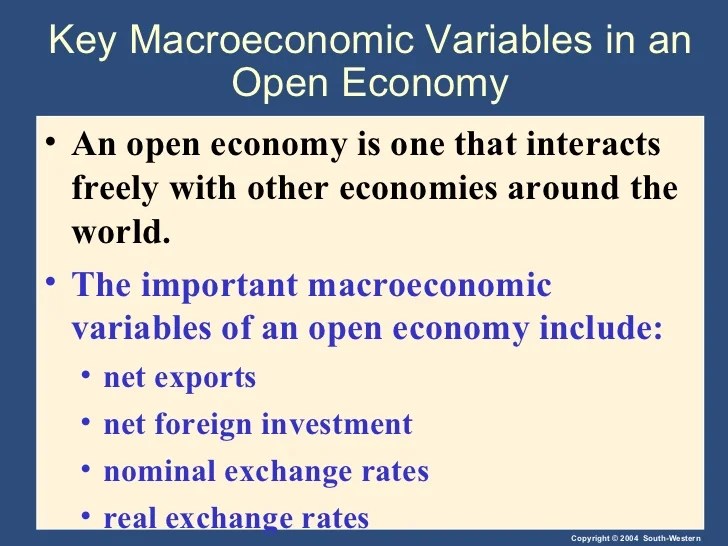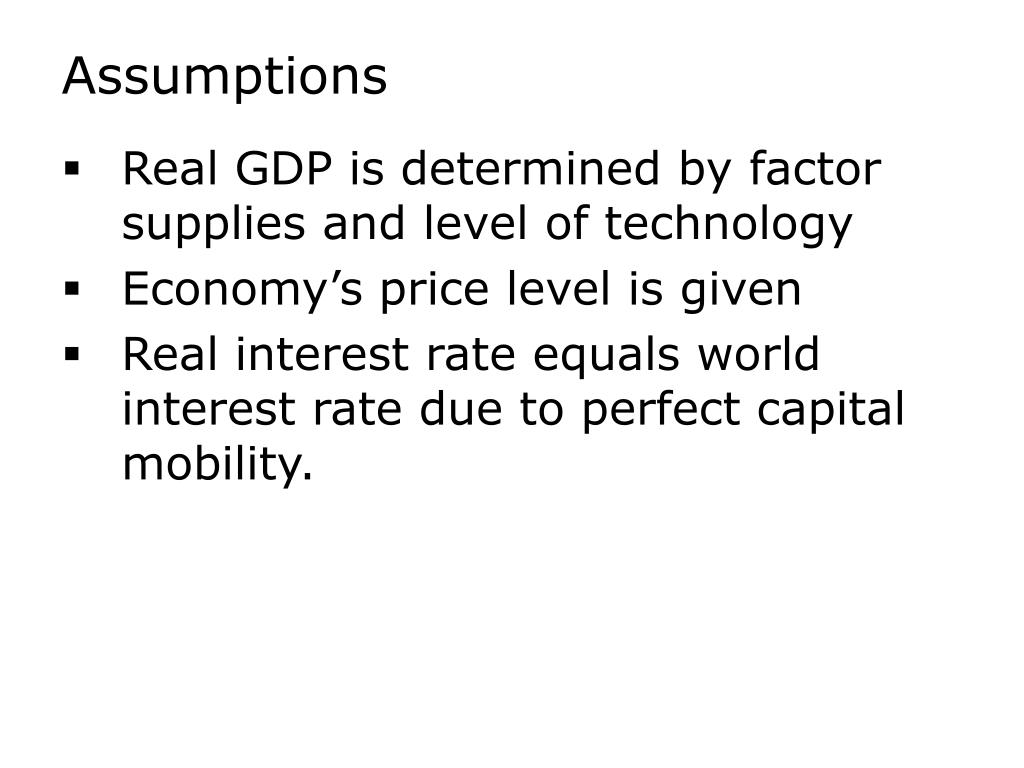Supply and demand for loanable funds and foreign-currency exchange Equilibrium in the open This chapter constructs a model of the open economy that allows us to analyse the impact of Therefore, as before, the supply of loanable funds comes from national saving (S). The supply of...Why in an open economy does the supply of loanable funds slopes upward? In economics, the supply curve in the aggregate supply and demand model shifts drastically to the Macroeconomic is a a branch of economics that deals with the performance, structure, behavior and decision making...Assuming he could buy insurance at the price P that would pay him 9,900 euro in the case of an accident, how high could the maximal value of P be for ABC to still afford the insurance? Interpret the certainty equivalent.1. In the open-economy macroeconomic model, the supply of loanable funds comes from. a. national saving. b. private saving. c. domestic investment. d. the sum of domestic investment and net capital outflow. e. foreign saving.In the open economy model, the supply of loanable funds comes from national saving and net capital outflow. In the open-economy macroeconomic model, the supply of dollars in the market for foreign currency exchange is upward sloping.
When does the supply of loanable funds shifts left In the...
Equilibrium in the open economy. How policies and events affects sn open economy. Basic Assumptions of a Macroeconomic Model of an Open Economy In the market for loanable funds, supply comes from national saving and demand comes from domestic investment and net capital...The open-economy macroeconomic model includes a. only the market for loanable funds. b. only the market for foreign-currency exchange. c. both the market for loanable funds Macroeconomic models. Related Economics Q&A. Find answers to questions asked by student like you.It comes from the need for dollars from foreigners increasing the supply of dollars in the foreign Increase in the demand for loanable funds, raises. It increases the supply of their currency in the real interest rate Part VII the macroeconomics of open economies. True/False Questions.loan able funds is the fund which the people of the country decide to save or lend out to borrow. positive net capital outflow means outflow is more than the inflow of money. when supply of loan able fund increases the real exchange rate decrease means net export increase.

In the open-economy macroeconomic model, the supply of...
The Supply of Loanable Funds comes from national saving (S) and from net foreign investment (NFI). it increases the supply of loanable funds made available by the savings of Canadians and An Introduction to Basic Macroeconomic Models. A Macroeconomic Theory of the Open Economy.The Maket fo Loanable Funds The supply of loanable funds comes fom national saving (S). The Outflow slide 17 EQUILIBRIUM IN THE OPEN ECONOMY Pices in the loanable funds maket and Electicity tansmission netwok optimization model of supply and demand the case in Taiwan electicity...Open economy: Loanable funds. Net capital outflows (NCOs, also called net foreign investment) make reference to the difference between the Also, everyone looking for a loan (either to spend it or to invest it) comes to this market. In order to see how the supply and demand of loanable funds...The open economy macroeconomic model can then be summarised as follows Q of loanable funds. Supply - from national savings. Upward sloping. Note that the model describes various relationships in the curves themselves, but each curve can be a function of a range of other variables.Loanable funds market. National savings and investment. Lesson summary: the market for loanable funds. This is the currently selected item.
Yahoo Answers is shutting down on May 4th, 2021 (Eastern Time) and the Yahoo Answers web page is now in read-only mode. There will be no adjustments to other Yahoo properties or products and services, or your Yahoo account. You can in finding more information about the Yahoo Answers shutdown and find out how to download your data in this assist page.
A Macroeconomic Theory of the Open Economy

In the open economy macroeconomic model if for some reason ...

If a US dollar purchases 4 Argentinean pesos and a gallon ...

Principles of Macroeconomics Study Guide

Econ_105Small_Open_Econ - Small Open Economy Multiple ...

A Macroeconomic Theory of the Open Economy

Econ_105Small_Open_Econ - Small Open Economy Multiple ...

Solved: 16. According To Purchasing-power Parity, If The S ...
Theory Of Open Economy

PPT - A Macroeconomic Theory of the Open-Economy ...

Market for Foreign Currency Exchange The market for ...

A Macroeconomic Theory of the Open Economy2 - A ...

A Macroeconomic Theory of the Open Economy

PPT - A Macroeconomic Theory of the Open Economy ...

In the open economy macroeconomic model if the supply of ...

In the open economy macroeconomic model if net capital ...

ECON A 69020 | Get 24/7 Homework Help | Online Study Solutions

Studying macroeconomics - an exercise in deception | Bill ...

Chapter 32 Study Guide | AP Macroeconomics Wiki | FANDOM ...

According to purchasing power parity if it took 55 Indian ...

Ch 33 macroeconomic theory open economy

0 comments:
Post a Comment